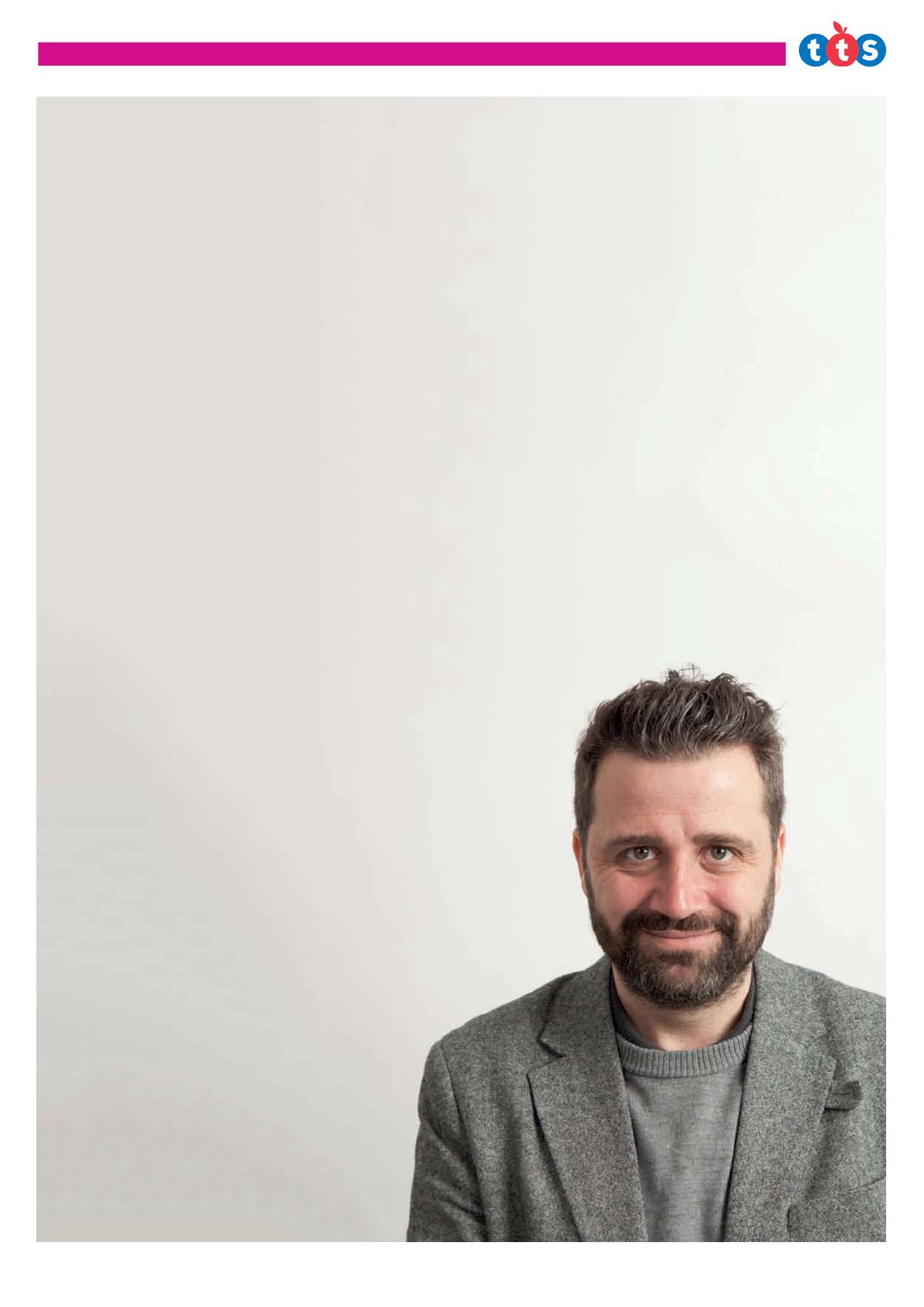
outsideof hisown life. I want himtoenjoyhimself
too, butmost importantly, I don’twant himto feel
like I did, likeanon-reading loser.
Notwhen therearealternatives, and loadsof
themat that.
Award-winningnovelist for childrenandyoung
adults, Phil Earle, hasbeenappointed thenew
onlineWriter inResidence for children’s reading
charity, BookTrust. Phil isusinghis residency to
recorda series of vlogs, talkingabout hisbelief
that everyone is a reader. Listen to themhere:
tinyurl.com/TRWbooktrust
TEACH READING & WRITING
11
Thompson’s
Blankets
. Let’s showthemhow
words andpictures together, marriedon the
page, can take themplaces theywill never
otherwisego. Let’s encourage readers to
engagewithnewspapers andmagazines. If
they love football, give themmatch reports to
poreover, or stats fromtheWorldCupfinal. If
fashion is their thing, give them
Vogue
or
GQ
.
I haven’t evengot ontopoetry yet.
Therearemagnificent poetswriting for
children today, my favouritebeingA.F. Harrold.
Hispoem ‘Midnight Feast’ is a thingofwonder,
madeevenbetter if youhear himperformit.
Thereareothers too: KateTempest, Lemn
Sissay, Polarbear (akaStevenCamden), Laura
Dockrill – all of themmastersof their craft, not
tomentionSarahCrossanwhowrites themost
incrediblenovels inblankverse.
So let’sfindwaysof grabbing readers
andshowing themthedifferent routes to
reading. I’mgoing through itwithmy son
Albieat themoment. He’s nine, and for
years has struggled toengage. But just
thisweekwehavehadabreakthrough.
I put
Tasminand theDeep
byNeill
CameronandKateBrown in front
of him, agraphic novel collated from
thegloriousPhoenixWeeklyComic.
Heflewthrough it in twonights. This is
unheardof for him. Sonow I’vegivenhim
Daredevil,
and I can see, reluctantly, the
firehasbeen lit.
All I have todonow is furiously
fan theflames.
And I will. Not just because
I’mhisdad, but because
itmatters. I want
himto
escape
R
eadingwas toomuch forme
as a child.Way toomuch.
Or rather,
thenovel
was.
There’s adistinction tobemade
here, an important one, as all toooften ‘the
novel’ is usedas thedefinitionof reading.
If youdon’t readDickens, or the classics, then
youaren’t a reader.
This is a line thatwas frequently rolledout in
front ofmeas a child, a line that slammed the
‘readingdoor’ firmly inmy face. I couldn’t read
Dickens; the sight of a thousandpages, eachof
themcrammedwith500words, mademyhead
spinandmy spirits fall.
I didn’t have the confidence toclimb that
mountain, and franklydidn’t seewhatwas at
the topof it formeanyway. I hadno interest in
readingabout nineteenth century life, so I didn’t
bother. I readYorkNotes andbluffedmyway
throughmyeducation, seethingabout literary
snobbery as I didso.
It doesn’t have tobe thisway though.
Wedon’t need tobeelitist aboutwhat our
childrenor indeedour adults read, because the
beautiful thingabout reading is that there’s
something for everyone. Of course there is.
We just have to redefinewhat reading is: we
need toopen thedoor and invite thoseon the
outside, back in.
Yes, thenovel is awonderful form. I know
that. I just needed tofinda shorter one that
heldmeby the lapels andshookmeuntil I read
‘TheEnd’ (that bookwasLouisSachar’s
Holes
by theway. I read it aged26).
But let’s not kidourselves that thenovel is
theonly answer. Let’soffer our young readers
illustratedwork – stories suchasDr Seuss’
HortonHatchesTheEgg
. Itmaybeonly
64-pages long, but it is themost joyful story
to readaloudever, and it is helpedalong the
waybypictures: funny, sad, movingpictures
that deepenour feelings for our hero. Having
picturesdoesn’tmake it lessof a read; itmakes
itmoreof one.
For that reason, let’sput graphic novels in
front of our reluctant teenage readers. Let’s
give themArt Spiegalman’s
Maus
, or Craig
“Ifeltlikea
non-readingloser”
PHIL EARLE
is an author and writer in residence for BookTrust
Asachild,
PhilEarle
turnedhisbackonliterature,butonlybecauseno
onehelpedhimfindtherightbook,anditwasoutthereallalong...
In association with


